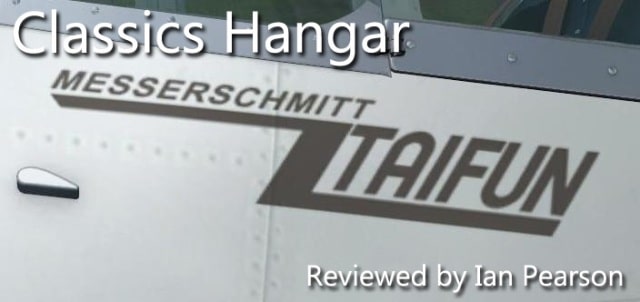 Most aviation fans, young or old, when hearing the name Messerschmitt, think of one thing: sleek grey and green shapes with yellow noses, swooping low over the Southern English countryside in pursuit of, or being pursued by, a Supermarine Spitfire.
Most aviation fans, young or old, when hearing the name Messerschmitt, think of one thing: sleek grey and green shapes with yellow noses, swooping low over the Southern English countryside in pursuit of, or being pursued by, a Supermarine Spitfire.
Forget everything else that the Bayerisch Flugzeugwerke or Messerschmitt ever built, it is the Bf109 that is firmly stuck in most peoples’ imaginations and, to be fair, it was one of very few designs to survive in production throughout the entirety of the war.
But this review isn’t about a Bf109, it’s about a Bf108. One number lower, and although there are a number of commonalities between the two models beyond just the designer and manufacturer, they are very different aircraft indeed.
The Bf108, far from being a single seat fighter built for speed and firepower, was a four seat tourer and trainer. Fast, for its time, yes, but never armed and by no means built for combat. That hasn’t stopped it from playing one in a movie, on occasion, though, and the real aircraft served with several armed forces in a communication/liason role, including wartime adversary the British Royal Air Force, as the “Aldon“.
The Classics Hangar representation of this model for FSX has been developed in association with the operators of D-EBFW, the oldest flying example in the world, so with a reputation like that of Classics Hangar and a real aircraft to work from, you’d hope this should be good.
It’s worth noting before I go any further that this review is being written using version 1.1 of the aircraft, which includes additional functionality over and above the initial release. (* See note at end of the article.)
This aircraft covered by this review is far from new. To be fair, however, neither is the review itself, as it was originally written for a site that no longer exists and was set aside when I stopped writing for that publisher, unfinished but never forgotten.
Due to some recent events and discussions, I came back to the model as a touring platform to explore a new area scenery, realised how well it still stood up against much newer releases, so decided to complete and publish the review.
After purchase, the installer for the CH Bf108 will be available in the form of a single 260Mb executable installer.
The first choice that you need to make is whether you wish to install the package in English or German. Although I did take German briefly when I was at school, that was quite a long time ago and I wasn’t very good at it, so I didn’t try that option to see if there were any differences other than just the dialogue boxes of the installer itself.
Following the language selection, the installer is going to be very familiar again, with a page pointing out that SP2 or the Acceleration add-on pack is necessary to run this aircraft, a EULA which needs to be read and accepted, then the path to FSX confirmed, after which the files will be extracted to the correct places.
There’s a little more to this package than your average FS aircraft add-on, so when the files finish copying, an additional little tool is run. Called the Bf108 “Just Fly” Utility, the tool gives you two, fairly self explanatory, options which are selectable by radio button; ‘Full Real Mode’ and ‘Just Fly Mode’. Put simply, “Just Fly” will allow you to do what you want, in a similar way to default aircraft. “Full real” will set limitations and break things if you push too hard. It is the “Full Real” mode that is used for the purposes of writing this review.
Having made your selection of complexity, you will be presented with the “quickstart” RTF file and a choice of resolution for the aircraft’s textures. The texture manager is, again, fairly self-explanatory, while the RTF file provides you with extra information that may be necessary. This will be of particular use to those who run newer Microsoft operating systems with their increased restrictions, plus includes the paths under which the main documentation can be found.
Once installed, the package takes up a little over 1.3Gb of hard drive space.
Finally, uninstallation, if necessary, can be done by either running an appropriately named Uninstall executable in the root of the FS folder, or through Control Panel.
Documentation
In addition to the paths you are informed about in the quickstart document, all the Bf108’s documentation and utility applications can be found under the “Classics Hangar”, “Bf 108 Taifun” entry of the Windows start menu.
The main manual itself is a 33 page PDF file, in addition to which, there are two HTML (web page) format documents for checklists and reference information, which are presented in this way as they are also available through FSX’s ‘kneeboard’ window inside the simulator.
The PDF main PDF manual itself contains a history of the aircraft, an overview of the panels, the gauges and their operation within FSX, plus operating instructions for the in-sim Bf 108 Manager page and screenshots and descriptions of all the aircraft presented in the base package.
Although there are a number of typographical errors and misspellings in the documentation, probably due to English not being the primary language of the developer, these are not difficult to work out around and for the most part it is clear and logically laid out. There are also occasions when it might have been better to start a new section on a new page as they tend to flow together without an obvious break, which may lead a reader scanning for something quickly to miss what they seek.
Because the gauges present in the Taifun’s cockpit are very different from the modern defaults that most users will be used to, there are a significant number of gauges specifically identified and their operation described in the manual, which takes up the majority of the document. For each gauge, click spots and areas of interest are highlighted in red on a black and white image of the gauge or panel, with each component identified using numerical lists and alphabetical sublists. This makes it very easy to identify them and is very well presented.
The checklists and reference documentation, both of which are as previously mentioned accessed via the FSX kneeboard, contain pretty much all the information required to use the aircraft once you know how to operate and understand the panel. Reference speeds, altitudes and suchlike are provided in both Metric and Imperial formats, which many people will find helpful as, unless you are used to flying aircraft with metric system gauges, they can easily catch you out. The checklists, while they contain mark areas next to each entry, are effectively just text documents and you cannot mark each check as completed when carried out, unfortunately.
Exterior
Because of the requirement for speed, hence efficiency of flight, the Messerschmitt Bf108 has a very streamlined appearance, with gentle curves and smooth cowlings contrasting with the sharp angles and generally cluttered skins of most aircraft in the era. In FS terms, this means that any modelling issues, cut corners and suchlike will usually be very obvious on close examination. With the CH model, I have to report that it didn’t matter how close I got, or what odd angles I looked from, I couldn’t find anything that detracted from the model at all. Indeed from whichever place I chose to look, the model looked superb.
Likewise, the texturing and detailing is equally impressive, standing up well against much newer competition, with subtle bump maps and a surface that is reflective, but not overly so, to represent a well maintained and polished aircraft.
There’s not a whole lot on the exterior of the Bf108B Taifun; external protrusions are limited to some closely cowled intakes, venturi and vents around the engine, balance weights below the ailerons and the semi-cantilever horizontal stabiliser construction that famously followed on to the Taifun’s numerical successor as well.
Eight liveries are included, covering test and demonstration aircraft in period liveries, two reproduction ‘wartime’ liveries with desert and the real world EADS aircraft’s European camouflage, plus Swiss and Swedish registered versions. As the aircraft is from a German developer, it is unsurprising that the historicially accurate insignia from the tail of the period liveries is not present, instead being replaced very effectively and appropriately by the Messerschmitt insignia, or just left off.
Animations are smooth and without obvious fault, including opening access hatches, baggage hatch and the expected control surfaces/gear. One thing that really did catch my attention when looking at the exterior model, however, is that the panel is recreated in external view, rather than being a flat texture or very basic model. It looks pretty impressive, I’m sure you’ll agree. The prop is also not a flat 2d object, but presents a visible shape when viewed from the side while in motion.
One thing you don’t see very often in non-naval aircraft is that the CH Bf108B accurately recreates the fact that the real aircraft had folding wings. In order to use this function, you’ll need to access the pop-up manager window and select the option there, or assign a keystroke/button to the “Wings fold/unfold” command in the sim. From the manager panel you can also access an engine pre-heater to aid with those cold morning starts, which is visible as part of the model.
To round out this section, I’d just like to mention the visual models of the pilot and passengers, which are visible whenever the master switch is on and they are appropriately set from the provided load/fuel control panel 2d window. I have mentioned several times during this review that the package is not new, but few developers even now make human figures that look this good. The belts go over shoulders without the angular sections that most models have and the pilot is animated in co-ordination with control movements. His left eye looks slightly odd and his smile is slightly forced, but you have to get right in close to see these minor issues.
In general terms, while most FS aircraft start to show flaws the closer you get to the model, this one really begs you to get right up close and personal with your viewpoint, to look at the detail.
Moving on, the interior model of the Bf108 comes in two versions – a “VFR” and an “IFR” cockpit. The VFR cockpit is historically accurate to the aircraft on which this model is based, within certain bounds of operability within the sim. There are significant differences between the ‘VFR’ panel and the ‘IFR’ version, though, including the addition of numerous gauges and the radio head units – hidden within the pilot’s glove box of the VFR panel – being clearly visible and on display.
Wherever you look in the aircraft’s interior, modelling and texturing is once more impeccable. The manufacturer’s insignia is inlaid with texture and bump-mapping into seats and carpets in a very realistic way, although there is a slight discrepancy between the chipped and worn paintwork, slightly scrubbed carpets and panel, against the brand-new looking fabrics. The quality of the textures mean that you will probably soon forget this, though. One other minor thing is that whichever livery you are flying, the panel displays the registration “D-EBFW”; probably unsurprisingly, as that is the aircraft on which this was modelled.
The chains of the port sidewall controls for elevator trim and flaps are particularly worthy of mention, although it is worth noting that the completely variable flaps are not present here and the flaps instead extend in increments of 10 degrees, meaning that they are far easier to set using joystick pushbutton controls or keys. The chains, however, look extremely lifelike and yes, my inner geek did cause me to sit there for a while just retracting and extending the flaps, playing with the trim, just to watch the controls and the readouts above them, move.
One slight sop to the fact that you are flying a simulator is that the developer has included simicons, similar to those found on the 2d panels of default aircraft, to allow you to access pop-up panels easily. Clicking the “X” icon will hide these, while clicking where the “X” icon would be will bring them back. possibly the most useful of the functions called by these simicons is that found by clicking on the UK flag symbol to the far right, which brings up a “westernised” overlay on the ASI, HSI and altimeter to aid those used to working in feet and knots, rather than metres and kilometers per hour.
Whilst researching this review, I did find a panel retexture to give the placards and text in English, rather than German, but am now unable to find this again. If anyone knows where it can be found, please let us know via a comment at the end of the review.
As you might guess, there aren’t many Bf108s left flying around the world and, of those that are, the vast majority have been heavily modified to meet owner requirements in the modern skies. To build this model, however, Classics Hangar got access to the oldest Messerschmitt aircraft still flying – D-EBFW, build number 1561 – which has allowed them to involve the real owner/operators in development and get the model as close as possible to reality. Have they succeeded? Unfortunately I’ve never flown a Bf108 and am highly unlikely ever to get to do so. That means I can only say whether they have achieved the quoted numbers and talk about the ‘feel’ of flying the aircraft.
As with any variable pitch propellor aircraft, there are two numbers you need to keep track of when operating the Bf108. In this instance, it’s more important than most that you keep an eye on them, because if you operate outside parameters for too long, the engine will quit on you and you’ll be finding out how it handles as a glider.
The two parameters in question are manifold pressure and prop RPM. The latter isn’t a problem, as rpm translates in any language. Unlike the majority of aircraft most sim pilots are familiar with, though, manifold pressure is not measured here in terms of inches of mercury (inHg); it is measured in “ata” or “atmospheres”.
The most critical limitation for operation is regarding the manifold pressure. While you can repeatedly operate at 0.95ata for a maximum of 1 minute without causing any major damage, operating at higher pressures than that, or for more than 1 minute at a time, can cause catastrophic failure. Other than that, the following are the guidelines for operation of the variable pitch propeller:
Takeoff: 12:00 – 2100rpm max
Climb: 03:00 – 2000rpm
Cruise: 12:00 – 1800rpm
Landing: 12:00 (fully acw) – 2000rpm
You’ll notice that not only are rpm values provided, but also “clock face” positions for the ‘coffee grinder’ pitch control. The manual states that pilots had a love-hate relationship with this device and I can see why, because it always wants adjusting at exactly the moment when your hands are both full with other controls. Not only that, but it cannot be operated using keyboard shortcuts or (properly) with a physical axis on your joystick or throttle quad. The reason for that “(properly)” is that if you move an axis lever, it will actually affect the prop rpm, but won’t move the pitch control handle.
A fix is provided for using the ‘coffee grinder’ if you are a registered (paid) user of Pete Dowson’s FSUIPC4, on the C-H forums, in the form of a short LUA script which can then be assigned to a control axis of your choice.
Provided you stay within the tolerances on the engine and prop, the Bf108B is actually an extremely nice little aircraft to fly, whether you are touring, or messing about a little. it isn’t overly aerobatic, so don’t do anything too silly in it, but it will haul four people around quite happily once they are loaded in the manager.
Takeoff is a fairly gentle affair, with the application of power (and monitoring of those limits) resulting in the aircraft becoming light and lifting of either of its own accord, or with a little back pressure, around 100km/h indicated, helped by Handley-Page designed automatic slats on the wing leading edges.
0.8ata and one full rotation of the ‘coffee grinder’ to give you around 1750-1800rpm will result in an impressive cruise speed approaching the top of the green arc, around 245km/h indicated. While trimming and maintaining direction is very easy, with only light adjustments required to maintain stable flight outside of turbulent air. I did find that the rudder was a little ‘snatchy’ during turns, making them quite difficult to co-ordinate smoothly, especially after breaks from flying the aircraft and getting used to others. How much of that is my control setup and how much is the flight modelling is, of course, open to debate.
Stalls are incredibly forgiving in this aircraft. Clean, the first indication you will get of a problem is the gear up warning buzzer with the throttle below around 20%, with increased difficulty maintaining level flight and an airframe rattle announcing the stall at around 95-100km/h indicated. The nose will drop slightly, but the controls maintain authority throughout the stall with no significant wingdrop tendency. Recovery is as easy as simply lowering the nose to break the stall, applying power and then gently lifting the nose again. The amount of altitude lost is pretty much entirely up to you, the stall is so benign.
In approach configuraton with full flap and the gear down, there is no buzzer, but the airframe rattle comes at a slightly lower airspeed, with the actual stall occurring between 70 and 80 km/h, depending on aircraft pitch. Like the clean stall, there is no wing drop, no loss of control authority and although the rate of descent is faster, recovery is equally easy.
In common with all but very few flight models, the Classics Hangar Bf108B will not enter a spin, no matter how hard you try and force the issue. What you will do, while trying this, is tumble the gyros, so if you’re flying in the IFR variant, you won’t have an attitude indicator after very much throwing around the sky.
Carrying on in approach configuration towards the ground, approaches and landings in the Bf108B are a continuation of what I have said previously. Low speed flight control is exceptionally good and once you have got used to what the aircraft is capable of, you can land in very confined spaces indeed. This is a good one for those little tree-surrounded grass strips that ACES are so fond of presenting us with in the sim.
Taxi steering is achieved using the rudder pedals as the tailwheel is interlocked with them. Visibility directly ahead is very limited due to the high panel and nose, as is usual with a taildragger. From about 11 o’clock round, though, the big canopy gives excellent line of sight, so taxying the aircraft is not difficult.
Overall the recurring theme is back. As a tourer, I really love this aircraft. It can get you in and out of almost anywhere, cruises at a very respectable speed and apart from a little excitement with needing a third hand to move controls immediately after takeoff and before landing, it’s very easy to operate.
Sound
An important part of the immersion of any simulated aircraft is the sounds and here, again, the Bf108B doesn’t disappoint – except maybe in one, tiny, area, just off the tail of the aircraft.
The licensed sound module included with the package brings it to life, with clicks on switches, the rattle of the airframe when entering or holding a stall, plus much more besides.
It almost seems a pity to find something I didn’t really like with this package but, in external view when panning around, there’s a spot immediately behind the aircraft where the engine noise almost entirely dies off, This seems a little incongruous, particularly when flying and all you can hear is the wind noise, but it wasn’t a position I find myself spending much time in while flying, so wasn’t particularly obvious, unless I went looking for it. Otherwise, the sounds are excellent.
Conclusion
It’s hard to know whether to classify the Bf108 as a warbird or a GA aircraft because its history involved so much of both military and civilian activity. What I do know is that most FSX users with an interest in either older GA or military aircraft will probably want to check this out.
Even given the time that has passed since this package was released, it stands up exceptionally well against add-ons developed several years later with all the advances in techniques and the higher expectations of users that this brings.
The package includes the ability to ‘bite’ if you mishandle the aircraft, but not in a way that should scare off novices – just remember to back off the throttle and not leave it firewalled, bring the prop revs back a bit and you’ll be fine. Possibly flying at yellow arc speeds, but you won’t be trailing smoke just because you didn’t get settings right for the cowl flap, oil cooler and everything else exactly at the power setting you are using.
So would I recommend it? Come on. Even if you skipped the rest of the review and just came down here, you probably get the message by now. The Classics Hangar Bf108B is a very nice addition to your hangar indeed.
Author’s note: Service Packs 2/2a.
Since this review was originally written, Service Packs 2 and 2a have been released, fixing some issues with the aircraft and adding more options. As the review has taken years (seriously) to reach this point, rather than include the new Service Packs within the review, please read about them here on the Classics Hangar forum.
My Ratings
- Installer: Very good.
- Documentation: Very good.
- Modelling: Excellent.
- Texturing: Excellent.
- Flight Model: Very Good – just a pity it can’t spin.
- Sound: Very Good
- Extras: Configuration utilities. paint kit, high resolution textures.
Download Size: FSX 272MB
Price: EUR 23.40 without VAT
Developer Homepage: http://www.classics-hangar.de/
Link: http://secure.simmarket.com/classics-hangar-messerschmitt-bf-108-b-taifun.phtml
Test System:
Intel i7 3770 OC @ 3.9 Ghz, 16 Gb RAM, GTX680 w/4Gb video, Win 7 Home Premium 64, FSX w/Acceleration, DX9, Orbx FTX Global + Vector/FTX EU England, Active Sky Next.


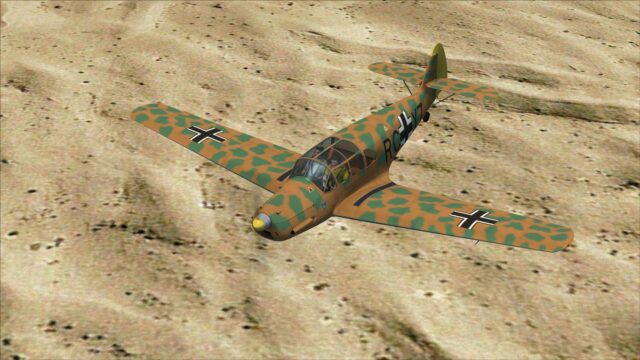
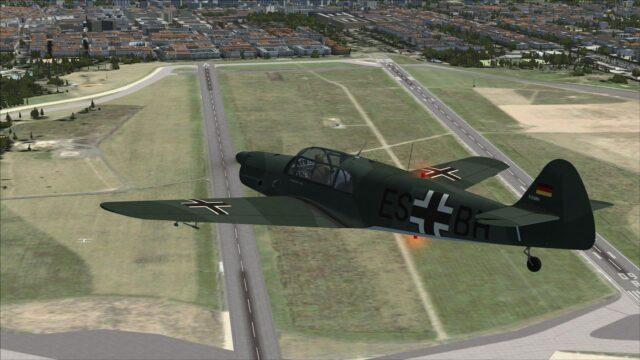
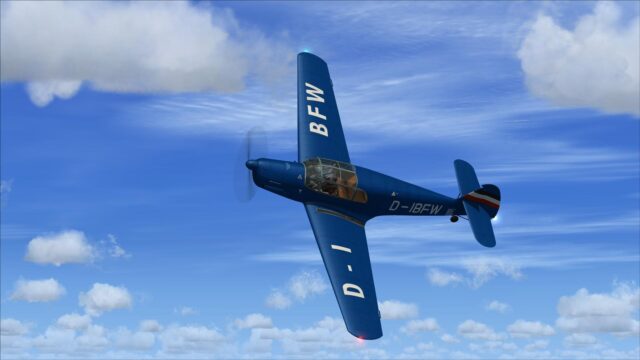
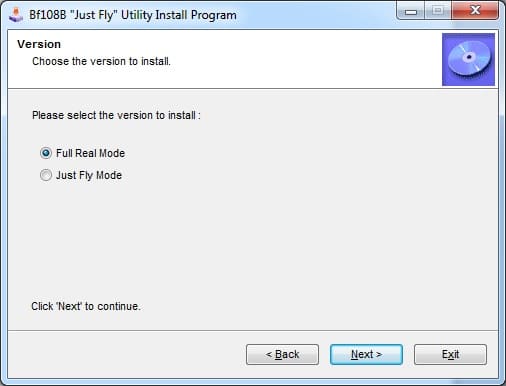
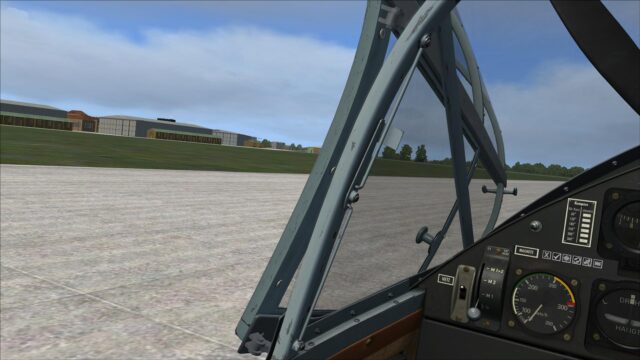
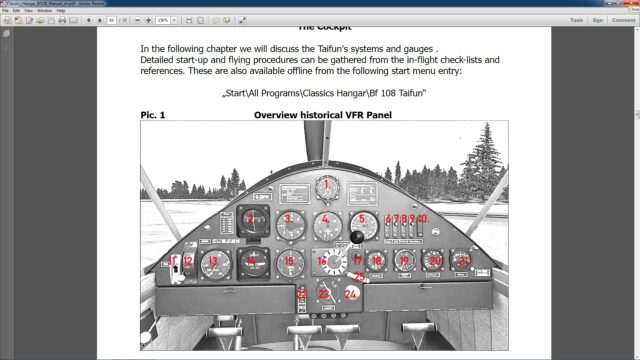
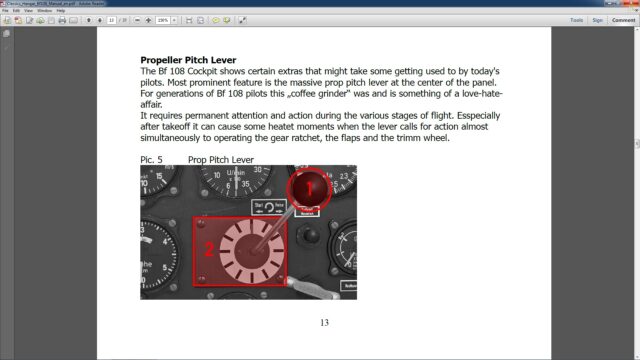
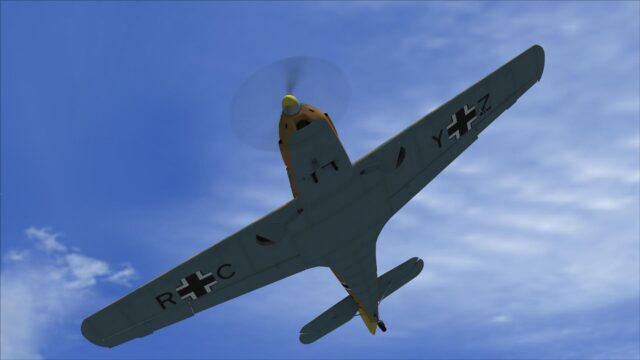
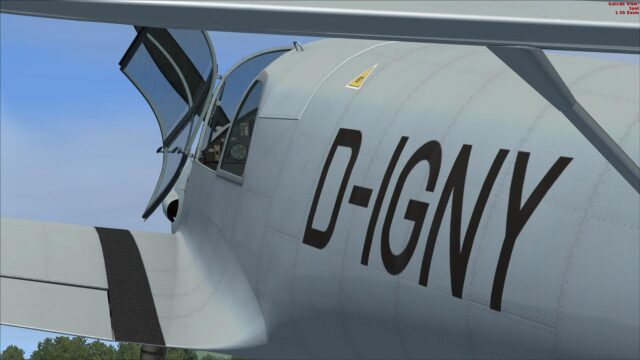
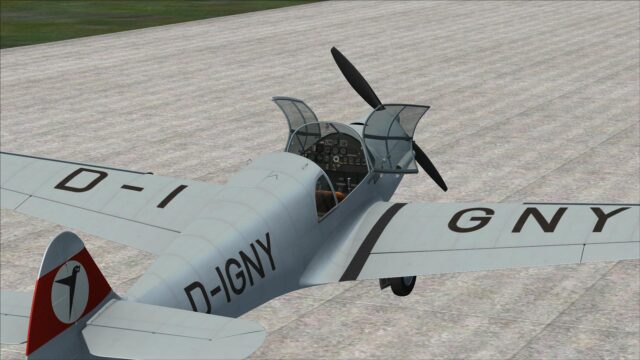
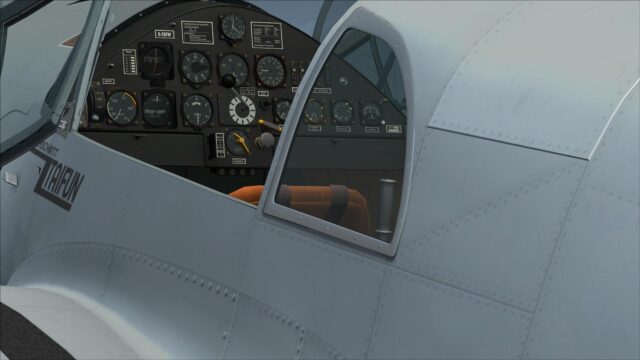
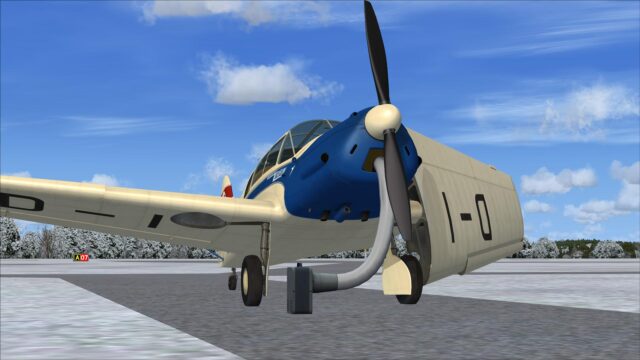
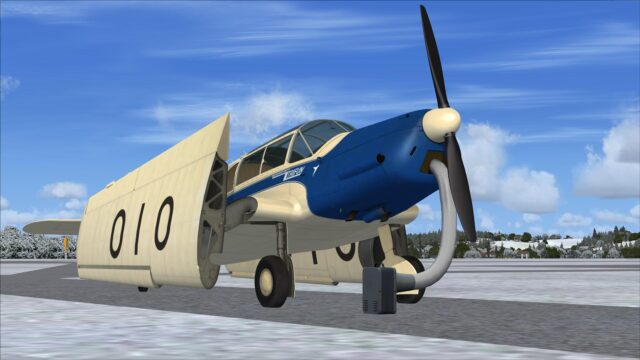
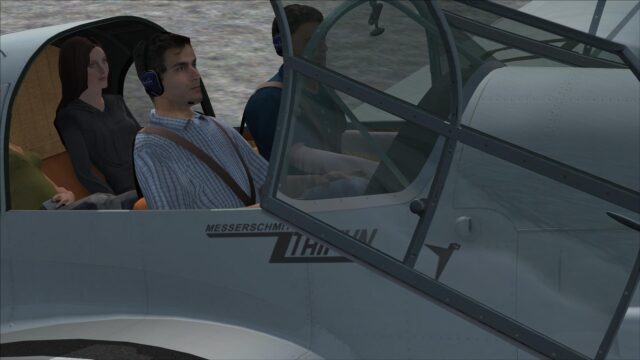
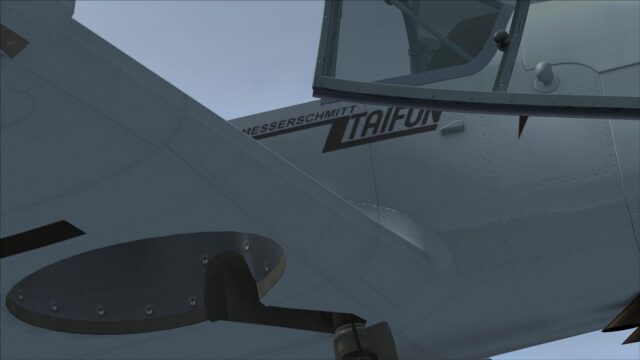
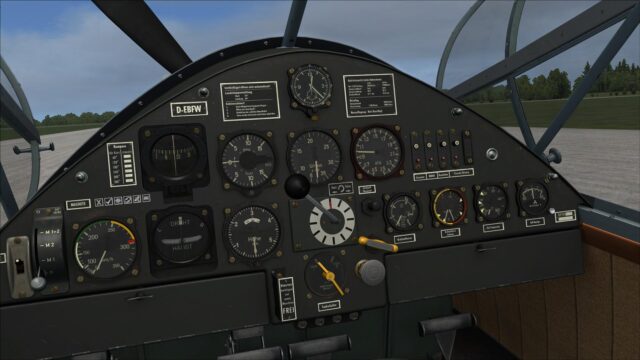

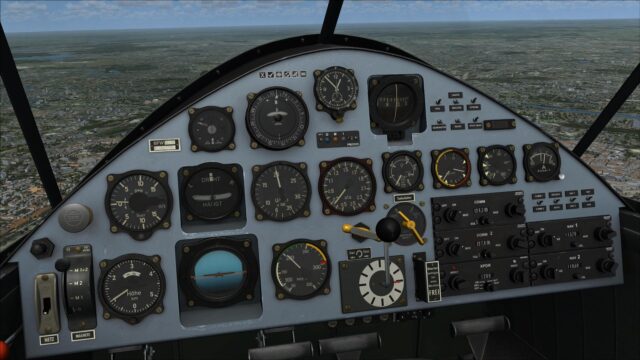
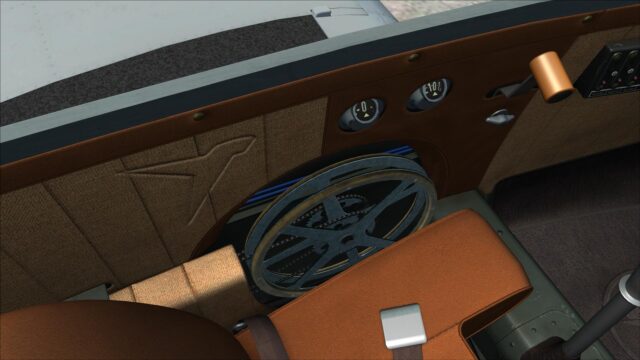
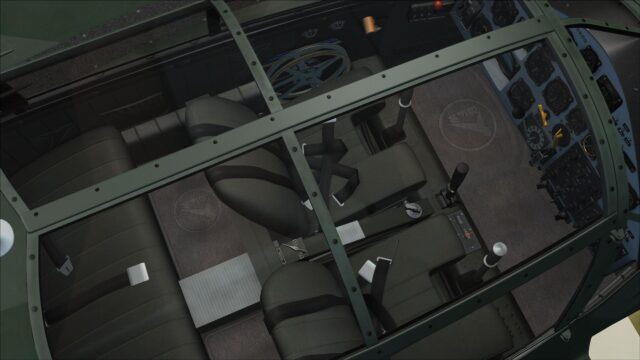
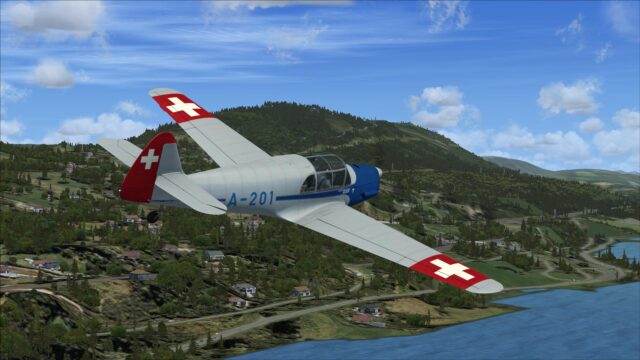
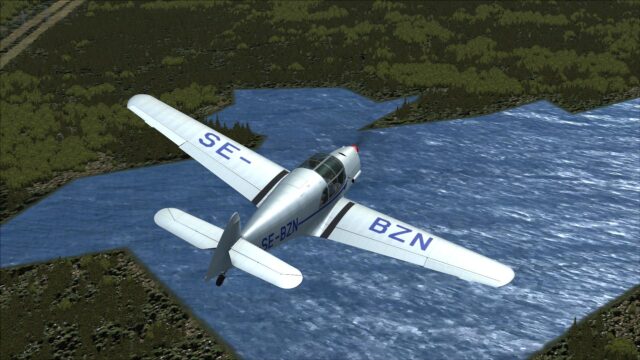
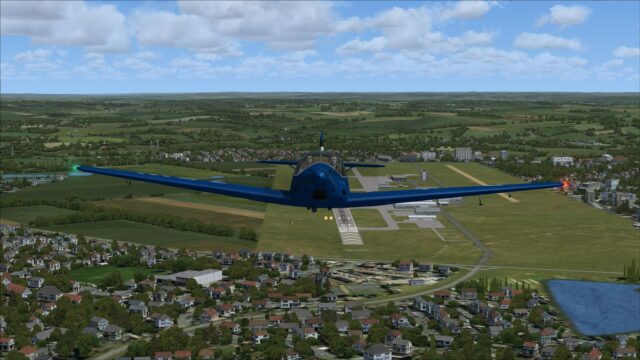
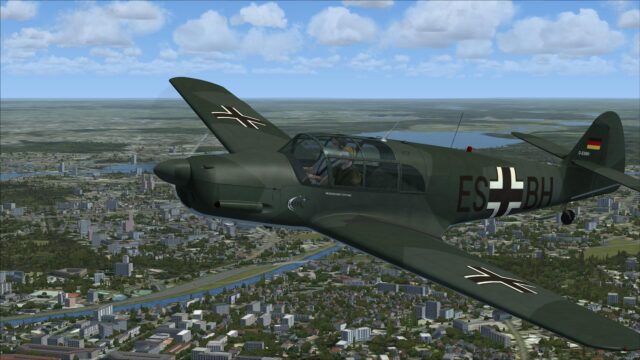
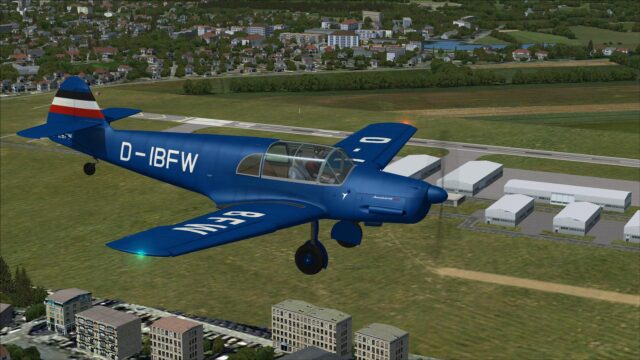
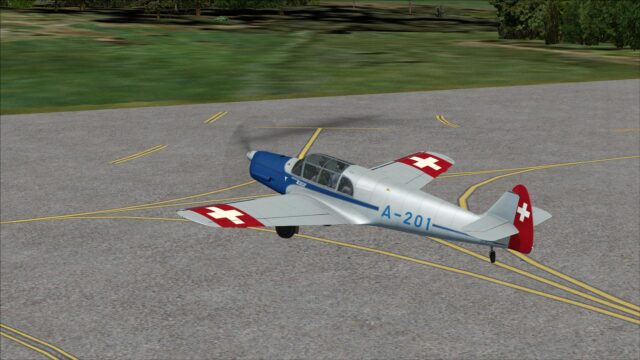
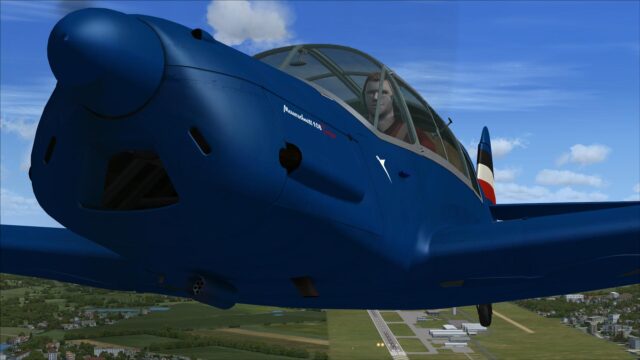
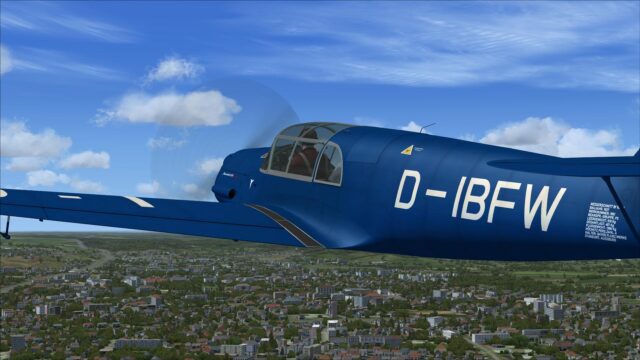
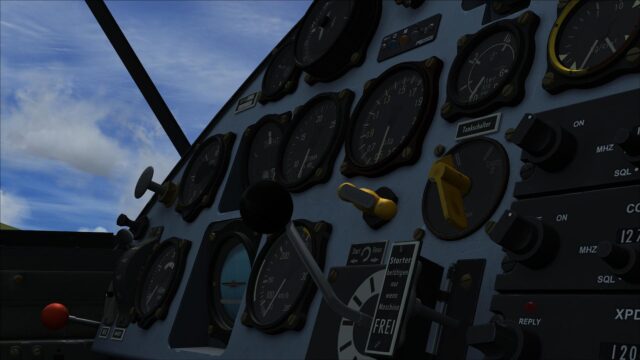
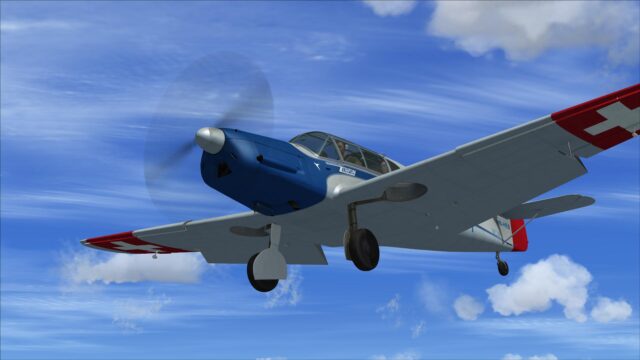
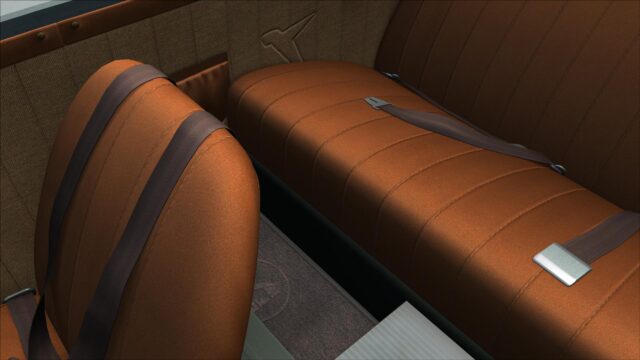
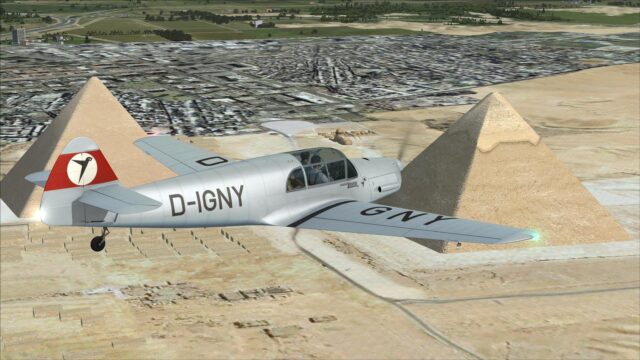
0 Responses
A great review of a plane i knew very little about. Too bad i’m not using FSX anymore. I might consider Prepar3D, but then it seems rather few 3d party developers are interested in that platform.
I, personally, haven’t tried it in P3Dv2, but almost all FSX models worked in P3Dv1 and the vast majority still work in P3Dv2, usually to very good effect.
There is some discussion over at the C-H forums about P3D, although there doesn’t seem to be a whole lot in terms of answers. Unfortunately I have to work this weekend, so have less time than I’d like to follow this up. I will try it in P3Dv2 and see if it works, though.
Here’s one thread discussing P3D, but I presume it is v1, rather than v2:
http://www.classics-hangar.de/phpBB3/viewtopic.php?f=17&t=673&sid=bf323c576c663e40d42e734937a46840